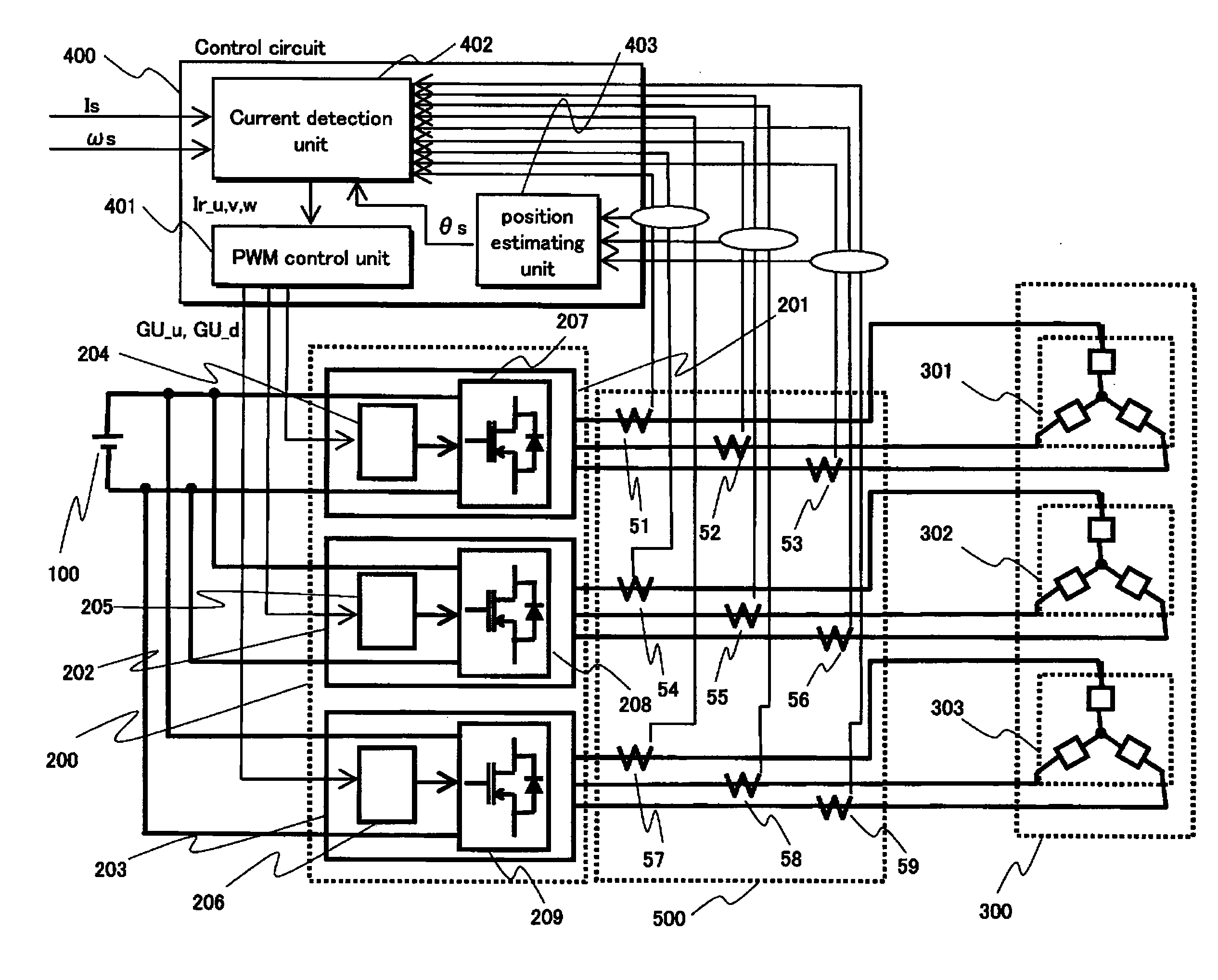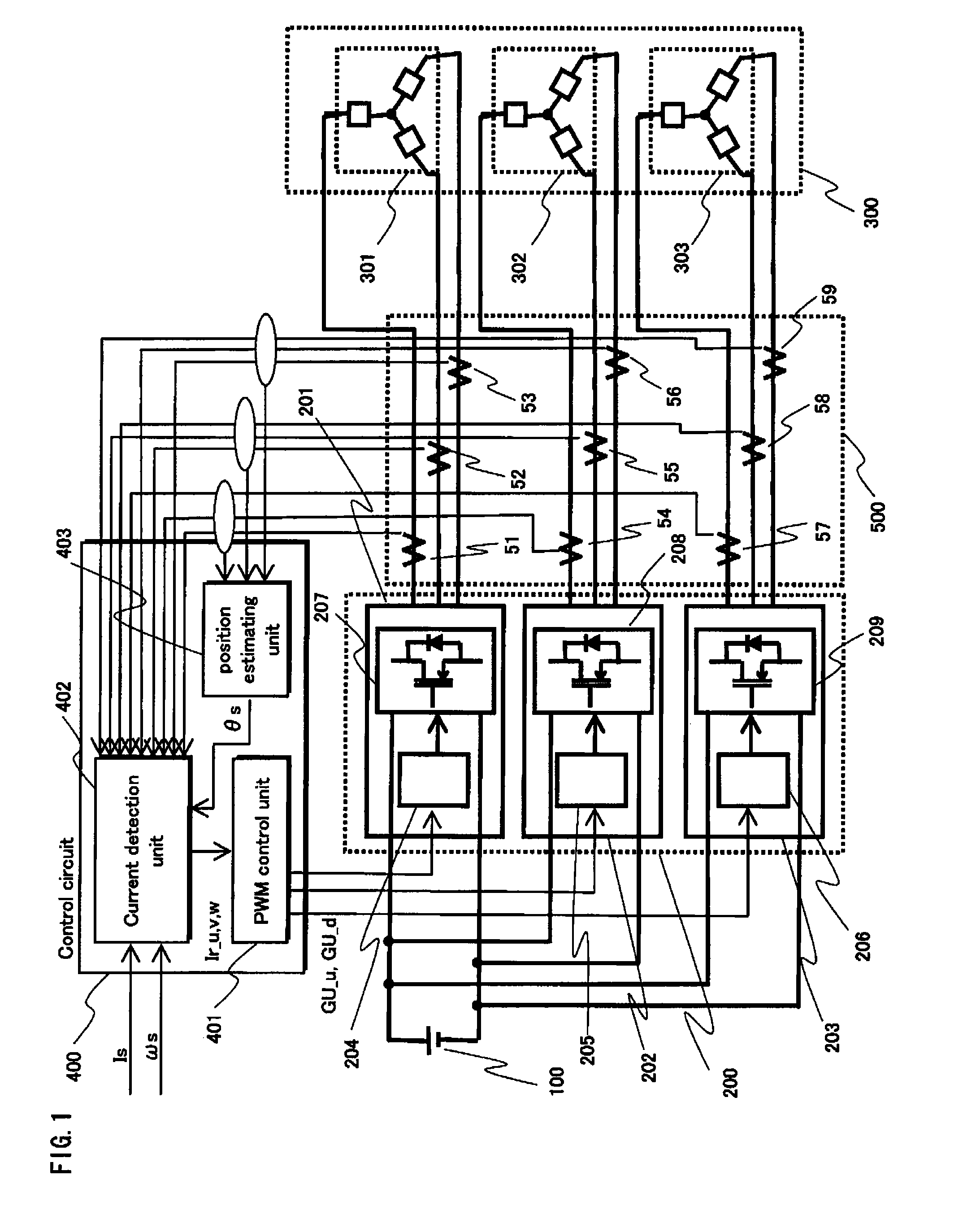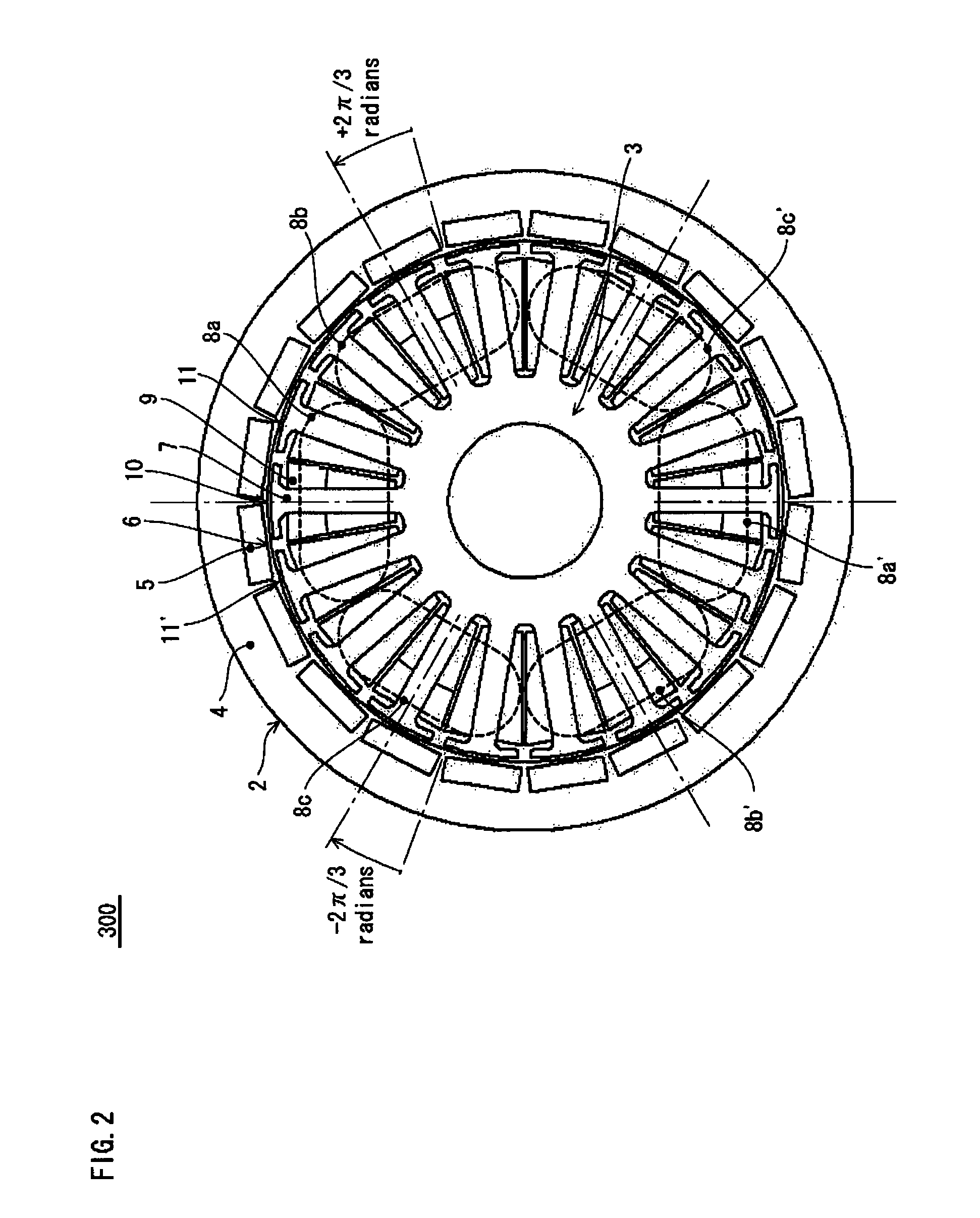Synchronous electric motor system
a technology of synchronous electric motors and synchronous motors, applied in the direction of motor/generator/converter stoppers, electric generator control, dynamo-electric converter control, etc., can solve the problems of increasing switching loss and reducing switching loss
- Summary
- Abstract
- Description
- Claims
- Application Information
AI Technical Summary
Benefits of technology
Problems solved by technology
Method used
Image
Examples
embodiment 1
[0047]FIG. 1 shows an overall structure of a synchronous motor drive system pertaining to Embodiment 1 of the present invention.
[0048]The synchronous motor drive system includes a DC power source 100, an inverter group 200, a synchronous motor 300, a control circuit 400 and a current detection module 500.
[0049]The DC power source 100 provides direct current to the inverter group 200.
[0050]The inverter group 200 includes three-phase inverters 201, 202 and 203. Each of the three-phase inverters 201, 202 and 203 performs DC-AC conversion according to a gate control signal from the control circuit 400, and provides three-phase alternate current to the synchronous motor 300. The three-phase inverter 201, 202 and 203 are composed of power circuits 207, 208 and 209 and gate drive circuits 204, 205 and 206 corresponding to the power circuits, respectively. All the switching devices included in the three-phase inverters 201, 202 and 203 are included in a single module.
[0051]The synchronous m...
modification 1
of Embodiment 1
[0103]In the synchronous motor drive system pertaining to Embodiment 1 of the present invention, it is preferable that currents that are out of phase with each other are applied to the coil terminals of the synchronous motor. The following explains an example method for applying a current to the synchronous motor 300 to drive it to rotate. The structure of the synchronous motor 300 is shown in FIG. 2 and FIG. 3.
[0104]FIGS. 14A-14C show positional relationships between the stator and the rotor of Embodiment 1 of the present invention. FIG. 14A-14C show the positional relationship in the case where the rotor is rotated anti-clockwise by 2° in mechanical angle (i.e. π / 9 radians in electrical angle) at a time. FIG. 15 shows the temporal change of the currents applied by the three-phase inverters to the stator coils. The time points (a), (b) and (c) in FIG. 15 correspond to the positional relationships shown in FIG. 14A, FIG. 14B and FIG. 14C, respectively.
[0105]In FIG. 2 ...
modification 2
of Embodiment 1
[0113]A description is made below of a modification in which the present invention is applied to a synchronous motor drive system including two inverters. FIG. 16 shows an overall structure of a synchronous motor drive system pertaining to this modification.
[0114]In the synchronous motor drive system pertaining to this modification, the inverter group 200, the synchronous motor 300, the control circuit 400 and the current detection module 500 included in the system shown in FIG. 1 are replaced with a inverter group 210, a synchronous motor 304, a control circuit 404 and a current detection module 501, respectively. The following explains the differences form the structure shown in FIG. 1.
[0115]The inverter group 210 has the same structure as the inverter group 200 except that the three-phase inverter 203 is removed.
[0116]The synchronous motor 304 includes two three-phase coils 305 and 306.
[0117]The control circuit 404 has the same structure as the control circuit 400 ...
PUM
 Login to View More
Login to View More Abstract
Description
Claims
Application Information
 Login to View More
Login to View More - R&D
- Intellectual Property
- Life Sciences
- Materials
- Tech Scout
- Unparalleled Data Quality
- Higher Quality Content
- 60% Fewer Hallucinations
Browse by: Latest US Patents, China's latest patents, Technical Efficacy Thesaurus, Application Domain, Technology Topic, Popular Technical Reports.
© 2025 PatSnap. All rights reserved.Legal|Privacy policy|Modern Slavery Act Transparency Statement|Sitemap|About US| Contact US: help@patsnap.com



